by staff | Dec 18, 2017 | Alcoholics Anonymous, Christmas, Coping Skills, Family, Holiday, Recovery, Sober Fun, Sobriety
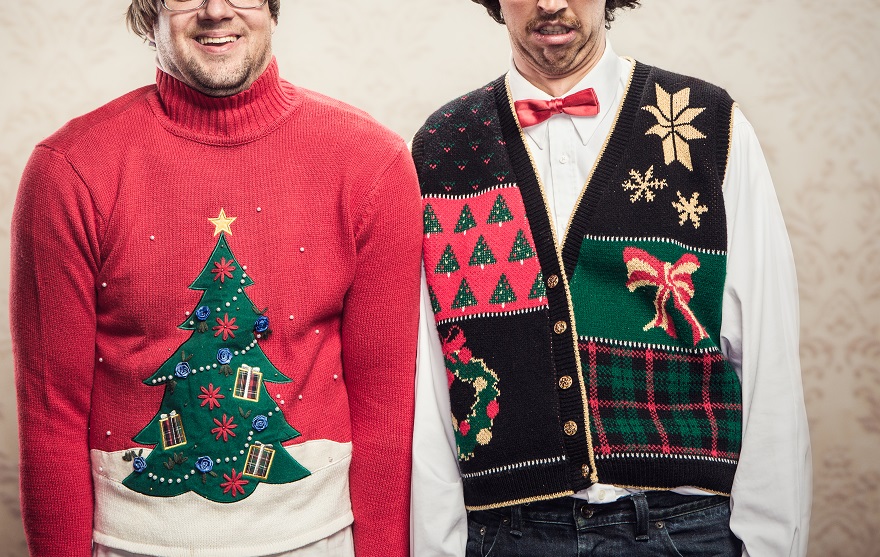
(This content is being used for illustrative purposes only; any person depicted in the content is a model)
Welcome to another exciting edition of the 12 Steps of Christmas; our own take on the classic Christmas carol, with a sobriety-themed twist to try and bring some more compassion and insight to a cheerful time of year for those of us in recovery from drugs or alcohol. Substance use and addiction can make the season a tough time, but we want to help anyone who may be struggling or just people in recovery who need a little inspiration, to get in the right state of mind for the holiday.
Of course, we want to hear your feedback, and we are happy to share with our followers and friends more of the 12 Steps of Christmas.
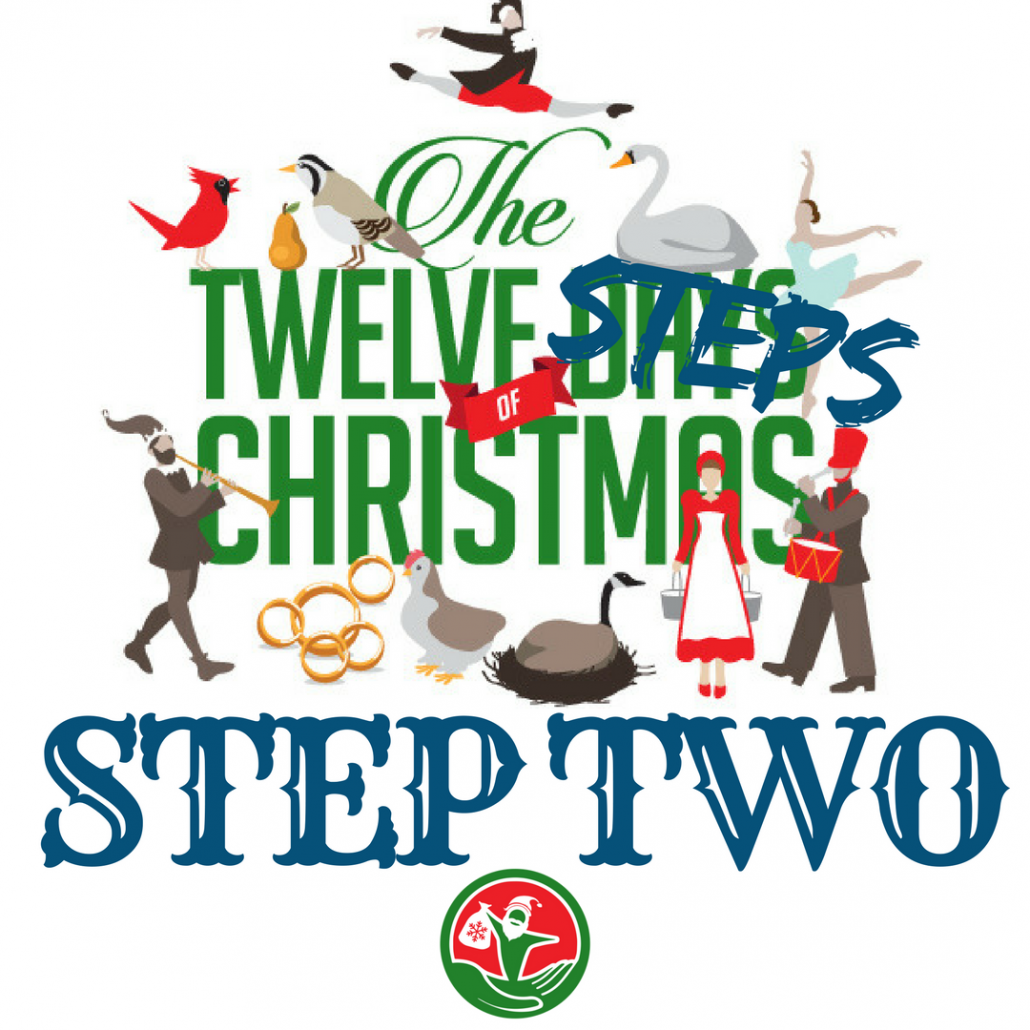 Step 2: Came to believe a Power Greater than myself could restore my holiday cheer
Step 2: Came to believe a Power Greater than myself could restore my holiday cheer
You may remember that in Step 1 of Christmas we talked about unmanageability and about how the holidays and our loved ones are pretty much out of our control. So then what do we do?
Well, for this one the 2 turtle doves probably aren’t going to cut it. For those familiar with the 12 Steps used in many recovery fellowships, there comes the concept of believing a Power Greater than yourself can help you out. Now for some, this can be the most difficult aspect of 12 Step programs because any implication of concepts like faith or spirituality can create contempt or frustration. People may resist this idea, thinking it is pushing a certain god or religion onto them.
Some people think Santa is more realistic than a god. Well, fine… try delivering presents to all the nice kids in the world in one night with only a few reindeer and a belly full of Oreo cookies! Now THAT is a power greater than you, for sure!
St. Nicholas with the mic drop!
We are not here to argue the idea of any god. We aren’t trying to force anyone into some kind of religious epiphany or preach any gospels. But, for those who are open to exploring the idea of a Higher Power; it can be extremely helpful when we talk about the struggles we face during stressful holidays.
Step 2 is all about finding the willingness to believe something outside of yourself can help you through this holiday. Sure, you should also be aware of yourself and your actions. But be open to the idea that you don’t have to force the holiday to be special, it just is.
Tis the season for believin’ dude!
Rejoicing without religion…
Now, of course, one thing is that not everyone celebrates Christmas in the first place. Different religions and cultures celebrate in various ways during this time of year.
We are pleased to wish everyone a Happy Chanukah, a Joyous Kwanzaa, and everything in between. In no way are we saying sobriety depends on your commitment to a faith during any holiday. For those who find themselves celebrating Christmas, there can be a great deal of diversity in how you celebrate and why. Even though is it historically a Christian holiday, plenty of non-Christians, atheists, and agnostics still celebrate. According to the 2014 General Sociological Survey:
- 21% of the American population does not identify with a religion
Younger people tend to be the majority of these trends. Yet, according to a new Pew Research Center survey:
- 90% of Americans celebrate Christmas
- 95% of Christians say they celebrate Christmas
- Only 46% of Americans say they celebrate as primarily a religious (rather than cultural) holiday, down from 51% who said this in 2013
So, with so many people not subscribing to the traditional guidelines of the Christianity, there are plenty of ways to celebrate Christmas without needing to fall in line. In early recovery, a lot of people are still trying to find a foundation to build some kind of understanding of spiritual concepts. So now isn’t the time to push them too hard in one direction or another. Just use this time as a chance to be more open to the joy and cheer that come your way.
You don’t have to be “spiritual” to be in the Christmas spirit…
For those who consider themselves spiritual or faithful, connection with your Higher Power can be the key to getting through the holidays. Some may view this time of year as a specific celebration of their faith and therefore should take every opportunity to remind themselves through the difficulties they face in recovery to appreciate and honor that connection to family and friends.
For those who do not consider themselves spiritual or faithful, you might even consider the holiday itself to be a source of power. The energy and the atmosphere it creates between people might be just enough to help you feel even more compassion and connection to those you love. Even if people don’t want to spend their Christmas in church or in prayer, you can still take the time to connect with your family and friends. Maybe that is what will restore your holiday cheer; the love you have with those you are close to. It doesn’t have to be a god or a faith, just be grateful and present for these moments.
Recovery from substance use disorder gives us the opportunity to cherish things and celebrate life in a new way. Believing that something bigger than you, even if it just Santa Clause or the Christmas spirit, can help bring the joy back into experiencing the holidays with your family and friends. Try to appreciate the chance to be clean, sober and with the people who mean the most to you. If nothing else, that is powerful beyond measure.
And leave some cookies and milk out… just in case.
Take some time this year to be open to the joy of the holidays, even if you don’t know where that cheer comes from. If you are struggling this holiday season, ask for help; not just for your family but, for yourself. Give yourself and those who love you the most the best gift you can. If you or a loved one is struggling with substance abuse or addiction, please call toll-free now.
CALL NOW 1-888-922-5398
by staff | Dec 15, 2017 | Addiction, Christmas, Family, Holiday, Recovery, Sobriety
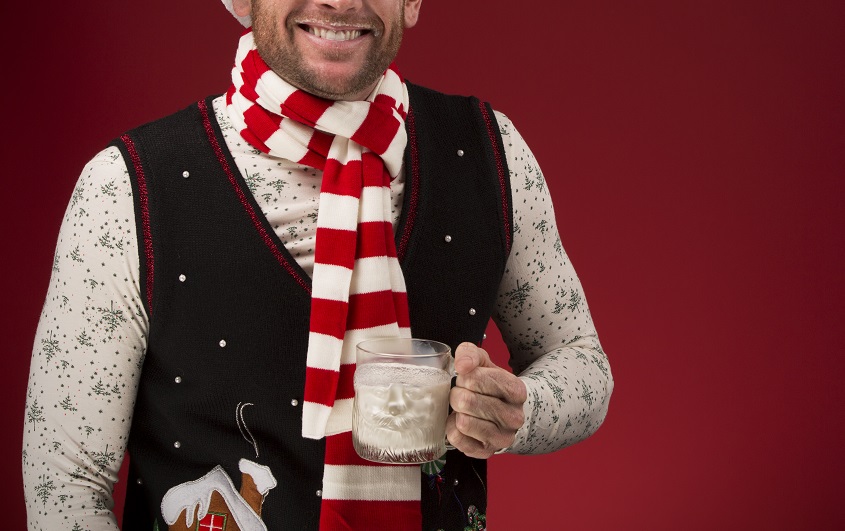
(This content is being used for illustrative purposes only; any person depicted in the content is a model)
In the spirit of the holiday season, we figure it is about time to not only celebrate love, giving and connection but also a time to celebrate the journey into sobriety many amazing people are on all around the world. As we reach the end of another interesting and exciting year, full of bittersweet memories as well as joy and hope, we thought it would be nice to give a sobering spin on one of the Christmas classics; the 12 days of Christmas. But honoring the legacy of 12 Step fellowships that have been such a life-changing foundation for many people recovering from drugs or alcohol.
We know that the holidays can also be a difficult time for those who may be separated from their loved ones for the season. They can certainly be a difficult time for those who are still struggling or who have loved ones suffering. So we want to spread a little bit of hope along with holiday cheer.
So for the days leading us to Christmas, we look forward to presenting all of our incredible followers and friends with our very own version of the 12 Steps of Christmas.
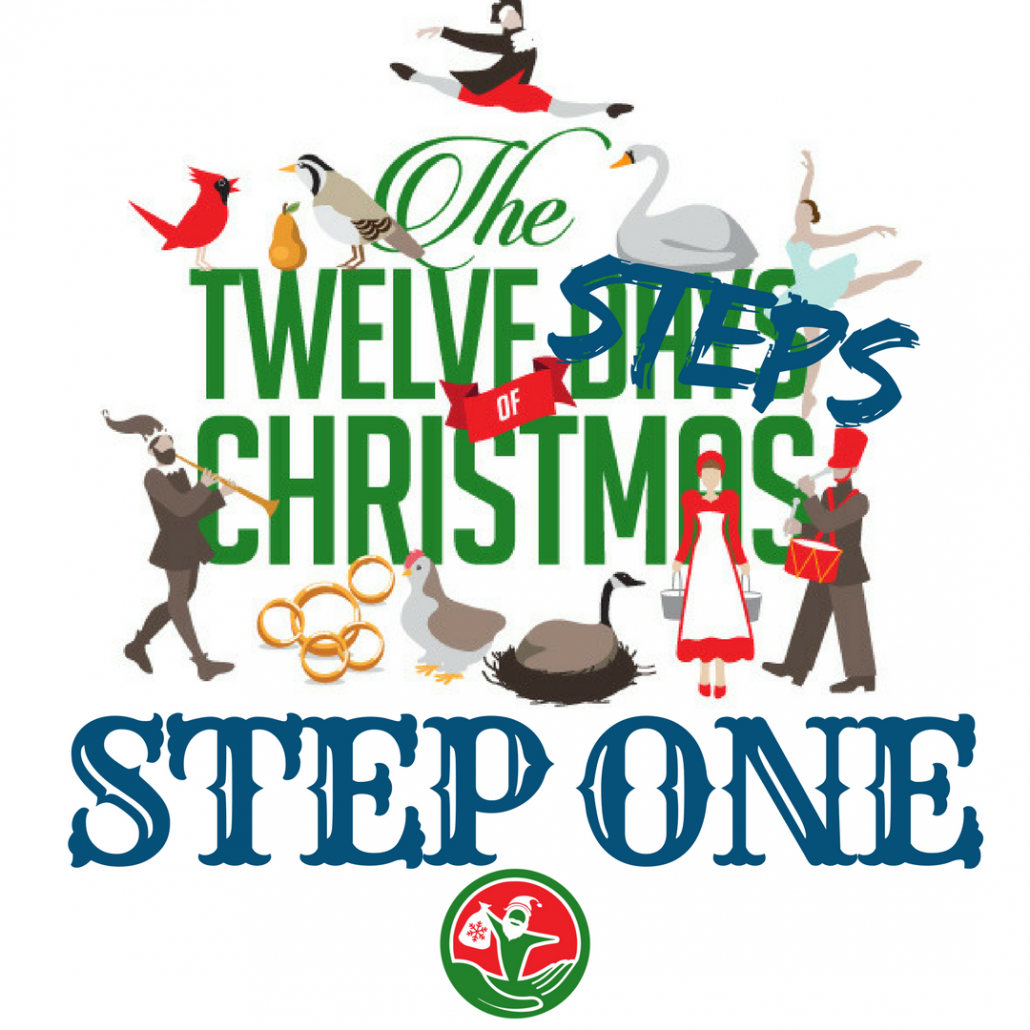 Step 1: Admitting that I am powerless over the Holidays and they can make my life unmanageable
Step 1: Admitting that I am powerless over the Holidays and they can make my life unmanageable
Forget the partridge in the pear-tree for the first day… let’s start off slow.
The fact is, the holidays will come around whether we are ready for them or not. I’m still trying to figure out how I survived the turkey and stuffing from November. Then BOOM here comes Christmas, with the gift giving and the family time and all that fun stuff. With all the tinsel and toys (yes, I still ask Santa for Batman action figures for Christmas) there comes a lot of stress and temptations for some people in sobriety.
Remembering Christmas with drinking…
Sometimes they want to join in “merriment” is pretty tempting. I know personally, the temptation to drink during Christmas was pretty much the same as every other 24 hours in early recovery; a lot. Lucky me, I got to spend my first sober Christmas in a holistic addiction treatment program. NICE! In all seriousness, it probably did save my life.
But I can remember the days when I used to drink with my loved ones on Christmas. After getting through the presents and coming together in the afternoon to spend time together, we would have food and drink together. The only problem, maaaaaybe some of us (ME) drank a little too much of the eggnog.
Whether or not you are a fan of “eggnog”, which in some families (or maybe just my family) tends to have a hearty serving of whiskey in the mix, there can be plenty of things about the holiday season that are tough to tussle with, especially in early sobriety.
Powerless over family…
We have to remember that our families are out of our control. All that dysfunction and colorful history with all the characters you call relatives can be, to put it mildly, exhausting and stressful. Sometimes our family members want to remind us of all the time we spent last year nodding out at Christmas dinner…
…or the time we threw up on the snowman in the backyard…
…or the time we sold all the presents under the tree and disappeared for a week…
…No? Just me?
Anyway, the truth is that when aunts, uncles, cousins, and siblings all come together with the parents and grandparents and so on, reminiscing is just part of the package. Maybe for some (me, apparently), it is more painful than others. Or perhaps, maybe you still have that family member that is struggling. Perhaps they are the ones disappearing for days, drinking too much cider or even causing conflict due to their distressed state in active addiction. It can be incredibly disheartening.
Either way, it is important to remember that we are not in control of our loved ones. Early recovery for a lot of us is about learning acceptance and working through the adversities we face with humility. Family support in the recovery process is more important than most people realize.
Plus, an abundance of Christmas cookies can go a long way.
Working with that unmanageability…
The most important part of any holiday, especially this time of year, is the compassion and goodwill toward others this season is meant to inspire in us. As troubling as life can be, our efforts to share love and connection are the best way to work through that obstinacy.
No matter how unmanageable the family get-together can be, in recovery, we have to try and remind ourselves that all we are responsible for is giving as much love, compassion, and acceptance as we can, while still maintaining healthy boundaries.
So step 1 for the 12 Steps of Christmas is essentially trying to remember not to stress the small stuff, and to accept yourself and your loved ones.
As for the partridge… is that even a thing? Who has a spare pear tree these days anyway?
Spending Christmas facing the hurdles and hardships of addiction can be a daunting task, but take this opportunity to be more aware of what truly matters and what that means for your recovery. For those struggling this holiday season, ask for help; not just for your family but, for yourself. Give yourself and those who love you the most the best gift you can. If you or a loved one is struggling with substance abuse or addiction, please call toll-free now.
CALL NOW 1-888-922-5398
by staff | Nov 24, 2017 | Addiction Medicine, Addiction Treatment, Maintenance Drugs, Medication-Assisted Treatment, Methadone, Prescription Drugs, Recovery, Suboxone, Vivitrol

Support for Medication-Assisted Treatment (MAT) has continued to grow in recent years as the opioid epidemic in America has put a mounting strain on the country. While the numbers of overdoses and opioid-related deaths have steadily climbed to devastating heights there has been more effort to explore treatment options. A better understanding of the medical and mental health aspects of addiction has become a priority. Stigma has slowly begun to carry less weight while advocates push for more effective and supportive routes to care for recovering addicts. One thing people have turned to heavily is medications like Suboxone of Methadone in attempts to steer away from more illicit and dangerous substances like heroin or fentanyl.
The application of medication in treatment can be very useful. It is a strategy that can help with the preservation of life by helping people stay off more unpredictable and life-threatening substances. However, some would say that if used for long-term this form of treatment is still relying on the idea of substitution. Often times these drugs have their own very harsh withdrawal symptoms, especially with extended use.
Taking a look at the more popular drugs used for medication-assisted treatment, one may ask- can you quit medication-assisted treatment with no withdrawals?
Understanding Medication-Assisted Treatment
Medication Assisted Treatment is the use of anti-craving medications to try and help address issues related to drug dependence, withdrawal, and relapse. The more common medications used in MAT include:
But MAT is also utilized alongside comprehensive therapy and other forms of support. Experts and advocates for addiction recovery, including the Substance Abuse and Mental Health Services Administration (SAMHSA), insist that maintenance medications alone are not sufficient enough treatment.
Advocates for medication-assisted treatment will compare MAT to someone taking medication for diabetes or asthma, with the belief that maintenance drugs are an essential part of staying healthy. However, others in the world of addiction recovery still believe it is possible to be healthy in recovery without the prolonged use of powerful medications.
The truth is the answer may not be the same for everybody. Different treatments may be more useful for different people. No one should be ashamed of the method they use to get help. But we also want to look at how some drugs used in medication-assisted treatment might make things more complicated for certain people.
Suboxone
Looking at the most popular maintenance drugs for opioid addiction, of course, we find Suboxone. To better understand Suboxone withdrawals, we first have to know what it is. This popular brand name is used to identify a prescription medication that contains active ingredients:
- Buprenorphine- a narcotic opioid medication
- Naloxone– an opioid blocker that impedes the effect of opioid medications
This medication functions as a partial opioid agonist and diminishes cravings as well as prevents other opioids from reacting to the brain’s opioid receptors. Taken in low doses for short periods of time, the drug can be helpful in curbing opioid withdrawal symptoms while tapering off without too many residual effects.
The tricky part comes when someone uses Suboxone for an extended amount of time as a replacement for heroin or other opioids.
Sometimes this can lead to its own form of recreational use and physical dependence. Even the U.S. Drug Enforcement Administration reports that Suboxone is commonly susceptible to abuse. It is still a powerful drug.
Suboxone Withdrawal Symptoms
While Suboxone and other maintenance drugs may be a preferred tactic for going ‘cold turkey’ off of heroin or other opioids, the drug itself still has the power to cause its own set of withdrawal symptoms. These symptoms can include:
- Irritability or agitation
- Anxiety
- Difficulty sleeping
- Profuse sweating
- Tearing
- Runny nose
- Frequent yawning
- Stomach pain or cramping
- Diarrhea
- Dilated pupils
- Nausea and vomiting
- Confusion
- Changes in mood
Not to mention precipitated withdrawal, when the ingredients in this medication can actually induce the onset of unpleasant symptoms rapidly, if not immediately, for someone actively engaged in opioid use.
Methadone
Methadone is a long-acting opioid medication utilized since the 1970s to try and help people get off of heroin. It is typically used today under strict medical supervision because the drug is very potent and has a high risk of addiction. In fact, a 2012 National Survey on Drug Use and Health found that approximately 2.46 million people reported to using methadone for a non-prescribed purpose at least once.
According to another study, in 2009 methadone was responsible for 1 out of every 3 opioid overdose deaths.
Because of the risks, a gradual taper should be utilized to wean someone off of methadone. Often times doctors will prescribe another detox medication to help with this process, with the tapering to be done under medical supervision.
Methadone Withdrawal
But as with trying to quit heroin or other powerful opioids ‘cold turkey’, trying to abruptly discontinue methadone can bring on intense withdrawal. This includes physical and psychological symptoms such as:
- Agitation
- Anxiety
- Depression
- Insomnia
- Runny nose
- Tearing or watery eyes
- Muscle aches
- Joint pain
- Sweating
- Nausea
- Abdominal cramps
- Diarrhea
- Vomiting
- Shivering
- Trembling
Many of these symptoms are similar to the symptoms of withdrawing from heroin or other opioids. So in a sense, this drug can create similar withdrawal symptoms as the drugs it is supposed to be used to treat.
Quitting Medication Assisted Treatment
Is it possible to quit medication-assisted treatment- yes, there are always other options for getting comprehensive care and lasting recovery without the prolonged use of these medications. Even relapse prevention is possible without relying on medications to fight cravings.
Can you quit medication-assisted treatment with no withdrawals? Well, that may be a process. It depends on a number of factors, such as the specific maintenance medication and the length of time using it. For example, someone who has been using methadone for years could probably have a much harder time getting off methadone than someone who used another medication for a month or so to help get off opioids.
Safety is crucial when deciding to quit MAT. Quitting medication-assisted treatment without a taper or other forms of medication can cause intense withdrawals. It is not suggested that someone try to quit MAT ‘cold turkey’ or without consulting a doctor for help with changing the dosage and slowly tapering off the drugs.
Again, just because it isn’t heroin or fentanyl doesn’t make it harmless.
MAT or Detox?
Medication-assisted treatment holds a lot of value, but the question becomes whether or not it is the kind of sustainable solution you want. Recovery isn’t one-size-fits-all. Medication-assisted treatment can be helpful in saving someone’s life who cannot stop using drugs. But is it something that will completely eliminate cravings and withdrawals, or will it just postpone these symptoms?
Remember, these are still powerful narcotic drugs that have a high risk for abuse. Some people end up using medication maintenance for life. Others will use it for a short period of time, with a detox period afterward. Either way, it is your choice; how long do you want to rely on substances, and to what extent?
Other models believe in providing holistic treatment and personalized therapy after a detox period, helping to reduce and remove chemical dependence and build a foundation for personal recovery.
Using medication to help with the painful and often overwhelming symptoms of withdrawal from opioids and other drugs can be essential to a smooth and healthy transition. In fact, with a safe medical detox, each individual is given an initial assessment to see what medications will be helpful in making this phase of treatment comfortable and safe. This can include medications for anxiety, mood disorders, physical pains and various other side-effects of substance abuse.
And when it comes to some of these medications, it can sometimes be necessary to continue using them.
The biggest difference is whether narcotic maintenance medications like Suboxone or methadone become a long-term prerequisite to recovery, or if they are used to help someone who is sick get better so that the real healing can happen.
Palm Healthcare Company believes in providing a safe medical detox to allow for a comfortable and healthy transition from active drug or alcohol use. Our facilities utilize an experienced and professional medical staff who help to monitor each individual’s progress and provide effective medical support for lasting recovery. If you or someone you love is struggling with substance abuse or addiction, please call toll-free now. We want to help.
CALL NOW 1-888-922-5398
by staff | Nov 20, 2017 | Coping Skills, Family, Recovery, Self Improvement, Sober Fun, Sobriety

For some of us, the holidays can be hard. Whether you are new to sobriety, in long-term recovery, or just a human being who just happens to live in a world with holidays, certain times of year can bring on a lot more stress than you would prefer to deal with. Thanksgiving can be one of these difficult times of the year. Some of us find it overwhelming to be surrounded by so many relatives and close friends because it can lead to high-stress social situations. Like when that one uncle brings up politics or that one aunt talks about their much more successful child. Or like when the parents bring up that time you pawned all their jewelry and crashed their car running from the cops.
No? Okay so maybe that is a very specific example.
Either way, Thanksgiving can be tough. Some of us in recovery from drug or alcohol addiction might not be able to spend this holiday with our families. We might feel isolated or even left out if our addiction has placed us in a situation where we cannot be directly present with our loved ones. Or we may find it a challenging situation simply because it is usually a day we remember drinking.
But still, there is always a great deal to be thankful for.
This week, as the holiday season comes in full force, we wanted to share 4 ways to get through Thanksgiving in sobriety for those who might be having a little more trouble than others.
-
Be present
Too often people forget that holiday gatherings aren’t so much about the food or the partying. They are about the quality of time being spent together. Being present and in the moment will help you to actually enjoy the holiday instead of stressing over it. Even if you are not physically present with your family, being more available to those you are able to be with can make Thanksgiving in sobriety more enjoyable.
And you can still be available for your family and friends that aren’t around by reaching out over the phone and giving them some of your time as well.
If you go into the holiday with the head-space of being a drag, you will probably follow through with that. But if you chose to be actively engaged in you can easily give new meaning and feeling to the experience.
-
Decide how to talk about it
Sometimes the fact that you are in recovery will come up, so you should decide how you want to talk about it… if you want to talk about it. The great thing is you aren’t required to tell anyone who doesn’t know. You don’t have to explain yourself. Just let people know you don’t drink.
When it comes to family or friends who do know about you issues with substances, decide how comfortable you feel with this conversation. Be willing to address concerns, but also set boundaries. You still have to take care of yourself, especially in early recovery.
Try to focus the conversation on the good side, like the fact that you are enjoying a Thanksgiving in sobriety with them. Some people will want to focus on the bad, but you can still decide how you are going to talk about it. To stay in the spirit and be present, talk about the solution you have now, not the problem you were facing.
-
Include your support system
Having a strong support system is a vital part of long-term recovery. Whether it is relatives, close personal friends or people from the recovery community, having people to have your back definitely helps. Holidays are all about connection, so stay connected to those who share your experience. Let your family members know you’re going to be leaning on them for support if things get hectic.
Also, have people outside of the family to reach out to. If you are involved in a recovery fellowship or support group, connect with your peers to learn how they handle similar situations. Don’t be afraid to ask for help. Include people who know what you are going through and who can help keep you on track.
-
Get in the Thanksgiving Spirit
One way to enjoy Thanksgiving in sobriety is to actually commit to the idea of Thanksgiving. This is a holiday all about being grateful for what you have and giving thanks and love to those closest to you.
If you are grateful this Thanksgiving, be sure to give some of yourself. You can help the family with making food or setting up, or you can go beyond that and give in other ways. Sometimes people in recovery find ways to volunteer for the holidays. Participate in some form of community activity that gives back and helps those in need.
Being enthusiastic about the opportunity to share this time with your loved ones and give to others can help you overcome the hang-ups you might encounter. If you can try to get in the spirit of the holiday, it won’t be so much about drinking or stressing over everything and more about spending the time with the people you love.
The spirit of the holiday is to celebrate what you have. If you are sober you have something pretty significant to be celebrating, right? Thanksgiving in sobriety lets us reconnect with those we love and show gratitude for the second chance at life. It shouldn’t be all that hard to get into the spirit of being grateful. The real good feeling comes from loving and giving back.
We would like to offer you the FREE GIFT of a checklist to help decipher if you are helping or hurting a loved one who is struggling with addiction.
Click for FREE GIFT
Always remember during the holidays to take care of yourself. For Thanksgiving in sobriety be grateful for how far you have come. If you are still struggling with an addiction, now is the time to get help, so that you can give your loved ones the peace of mind they deserve so you can have even more to be thankful for. If you or someone you love is struggling with substance abuse or addiction, please call toll-free now.
CALL NOW 1-888-922-5398
by Justin Mckibben | Nov 7, 2017 | Cocaine, Drug Abuse, Recovery, Stimulants
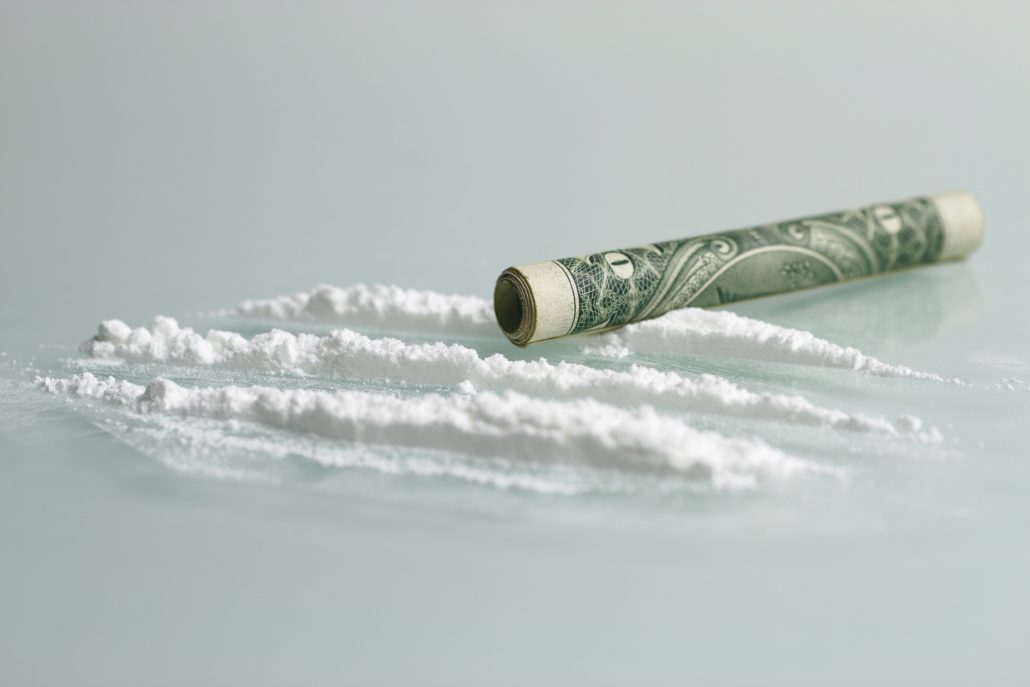
While the opioid crisis in America has reached public health emergency proportions, we still have to remember that there are a lot of other extremely dangerous drugs out there. Cocaine is a drug that has been around for a very long time, but with the rise in heroin and prescription drug abuse, people may have this idea that cocaine is no longer a real threat.
However, cocaine is still very dangerous and very prevalent around the world and here in the United States.
So how well do you know this drug? What do you know about its history? Do you know about the most common health risks?
Here are 25 facts about cocaine you probably don’t know.
Random History
-
Karl Koller (1857-1944)
This Austrian ophthalmologist experimented with cocaine as an anesthetic. The most infamous accounts are of Koller applying the drug to his own eye and then pricking it with needles.
-
Nervous Stimulant
Cocaine is the most powerful central nervous stimulant found in nature. The drug often gives users feelings of alertness, energy and even power.
-
Commercial Cocaine
In 1885, a U.S. manufacturer sold cocaine commercially. They advertised that cocaine would “make the coward brave, the silent eloquent, and render the sufferer insensitive to pain.”
Side note- The manufacturer even included a syringe in the packaging.
-
Drugged on the Job
According to some historians, white business owners in the early 1900s would encourage their African-American employees to use cocaine in order to boost their productivity.
-
First Addicted Physician
In 1884, famous American physician William Stewart Halsted performed the first surgery using cocaine as an anesthetic.
Side note- he shortly afterward became the first cocaine-addicted physician on record. Surprising?
-
Powdered Money
According to one study, trace amounts of cocaine can be found on 4 out of every 5 dollar bills. However, cocaine is a fine powder and is easily spread around, meaning the bill wasn’t necessarily used as a snorting straw.
-
Nazi Addicts
Historians say that Hitler was addicted to cocaine, among many other drugs including methamphetamines. Nazis often used drugs as a means of stimulation. Many believe all those stimulants helped ignite his ranting paranoia.
Prevalence
-
Second Most Popular
Cocaine is the second most commonly used illicit drug in the United States. The first is marijuana.
-
Emergency Visits
In 2004-2007 cocaine overdose caused 31% of visits to the emergency room.
-
First Timers
Every day, 2,500 Americans try cocaine for the first time.
-
Worldwide
Over 200 million people use illegal drugs worldwide. 21 million of those people use cocaine.
-
American Addiction
Even though the United States only makes up less than 5% of the world’s population, the country consumes approximately 37% of the world’s cocaine.
-
Illicit Industry
The illicit cocaine industry earns between $100 and $500 billion each year.
-
Scotland Snorts
Scotland has the highest cocaine use out of any other country in the world. One out of every 40 Scots uses cocaine, which is approximately 2.4% of the population.
-
Babies Born Addicts
Every year in the United States more than 400,000 babies are born already addicted to cocaine.
Health Risks
-
Fast-Acting Addiction
An estimated 10% of all people who begin using cocaine will immediately progress to serious, heavy.
-
Sharing is Hurting
Sharing straws to sniff cocaine can actually spread several blood-borne diseases, including hepatitis C.
-
Mental Health
Cocaine users tend to have higher rates of certain mental health conditions, including:
When compared to the general population.
-
Perfect for Heart Attacks
Come describe cocaine as the “perfect heart attack drug” because it causes so many harmful effects, including:
- Increased blood pressure
- Stiff arteries
- Thickening of heart muscle walls
Even worse is that these irregularities persist long after the effects of cocaine have worn off, even for those who aren’t chronic users.
-
Bruxism
Chronic cocaine use can cause a condition called bruxism, which is grinding of the teeth involuntarily.
-
Drug-Induced Decay
Cocaine frequently causes dehydration and dry mouth. This leads to many users having less saliva in their mouth, which can then lead to tooth decay.
-
The Nose No’s
Cocaine can also destroy the cartilage separating a person’s nostrils after continued use.
-
Deadly Influence
The direct pharmacological effects of the cocaine are often only credited with 1/3 of the deaths associated with cocaine use. The majority of deaths in connection with cocaine are by:
- Homicide
- Suicide
- Motor vehicle collisions
Meaning a lot of people die as a result of the mind-altering properties of cocaine and risk behaviors associated with the drug.
-
Lethal Mix
Consuming cocaine with alcohol is one of the deadliest drug combinations there is.
Now you may be wondering… what is the last fact going to be? You might get through this list knowing less than you expect about the powerful illegal stimulant…
NUMBER 25…
You can quit because there is help for you. Cocaine addiction can be crippling and feel impossible to overcome. But with safe medical detox, followed by effective and holistic treatment options, you can build a lasting foundation for recovery from cocaine addiction.
Palm Healthcare Company takes pride in offering comprehensive and innovative treatment options to help individuals create a personalized recovery plan. If you or someone you love is struggling, please call toll-free now. We want to help.
CALL NOW 1-888-922-5398
by Justin Mckibben | Oct 17, 2017 | Drug Policy, News, Opioids, Prescription Drugs, Recovery, Stigma
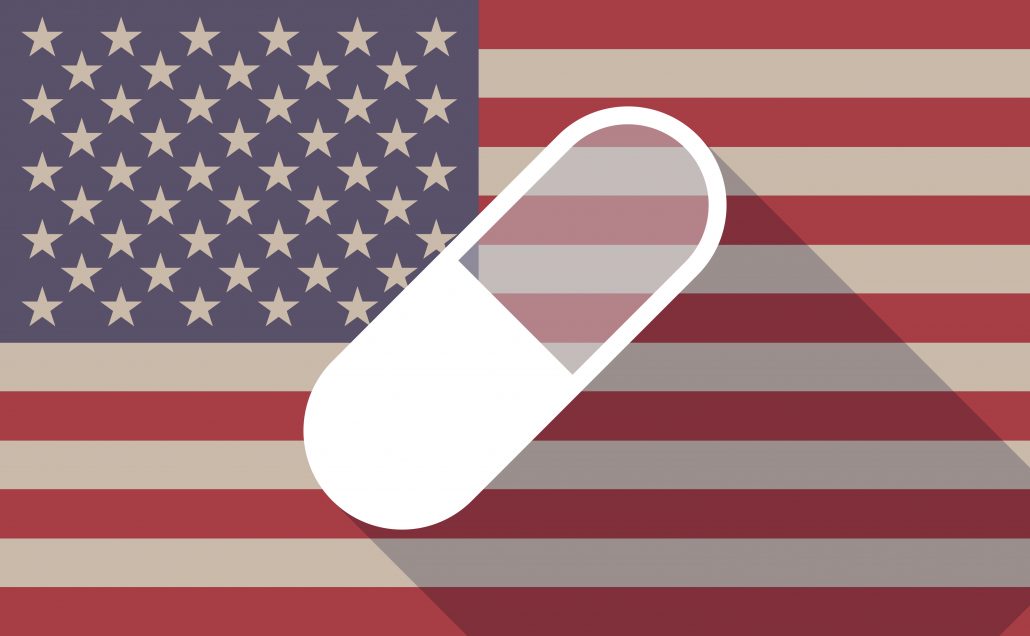
Back in August, the Commission on Combating Drug Addiction and the Opioid Crisis began urging President Trump to declare a national public health emergency to combat the opioid crisis that has crippled countless communities around America. While the President did soon enough say that he believed the opioid epidemic was indeed a national emergency, the actual official process has yet to begin. However, just this week news broke that President Trump will soon formally declare the “national emergency” status of the opioid crisis.
Reports indicate President Trump plans to make the official declaration next week. It seems appropriate following the explosive exposé following the story on ’60 Minutes’ of former DEA agent Joe Rannazzisi pointing a finger at Big Pharma companies, Congress, and lobbyists for fueling the opioid epidemic.
In fact, Republican Representative Tom Marino, who was the top pick for the Trump administrations Drug Czar, was name-dropped in a less than flattering light in the ’60 Minutes’ piece. Reports today now show Marino has withdrawn from consideration following the story.
So what does this newest revelation mean for combatting the opioid crisis?
Raising Awareness
One of the initial reasons for declaring a national emergency is pretty straight-forward; raising awareness. Not that we don’t see enough shocking news stories or warnings from local officials being issued in various states, but more attention on the issue will help channel more resources into actually helping address it.
As the commission states in their report:
“It would also awaken every American to this simple fact: if this scourge has not found you or your family yet, without bold action by everyone, it soon will,”
“You, Mr. President, are the only person who can bring this type of intensity to the emergency, and we believe you have the will to do so and to do so immediately.”
When the President of the United States says something is a priority, people take notice. Regardless of whether people always agree on politics, when we can all get behind a major issue and put effort into a more inclusive conversation, there is a better chance more can be done.
Overcoming Addiction Stigma
One of the most important aspects of fighting addiction is overcoming the addiction stigma itself. Many people who are suffering do not get the help they need because they are afraid of the stereotypes associated with drug abuse. A lot of people still doubt what the majority of the medical and scientific communities have adopted as fact; that addiction is a health issue, not a moral failing.
By declaring the opioid crisis a national emergency, President Trump has an opportunity to promote education along with public awareness. The more we can help people to understand how addiction affects the mind and body, the better odds we have of supporting those struggling with compassionate and effective treatment options.
Funding for Fighting Opioids
Perhaps one of the biggest hopes for many addiction recovery advocates is that by President Trump declaring the opioid crisis a national emergency he will influence lawmakers to allocate more funding to resources combatting addiction.
A federal declaration would also allow the government to pull funding from other areas as well, such as funding used for the Public Health Emergency Fund, or even the federal Disaster Relief Fund. So while America has been struck pretty hard by hurricanes and natural disasters, some of this same funding may end up going toward creating addiction resources.
One thing many are hoping is that these new funds will also go to promoting more addiction treatment options across the country. Some states may pursue incentives for performance-based enhanced care management (ECM) program, like one recently implemented in New Jersey. Others may put those resources into prevention and education initiatives.
One thing should seem pretty clear; treatment options should be a priority. We already know we cannot arrest our way out of this problem. The War on Drugs did not work, and many do not expect it will now either. With President Trump declaring the national emergency, hopefully, the new effort will go into protecting mental health and substance abuse parity with healthcare and insurance providers. If we have more ways to help those already desperately in need, we could see a better chance for a way out.
With the CDC stating an estimated 91 Americans dying every single day from opioid-related death, which many experts believe is grossly underreported, helping more people fighting opioid addiction find a way out is crucial. However, we should not wait on politicians, health officials or anyone else to fix it. Recovery takes action. If you or someone you love is struggling, please call toll-free now. We want to help.
CALL NOW 1-888-922-5398

 Step 2: Came to believe a Power Greater than myself could restore my holiday cheer
Step 2: Came to believe a Power Greater than myself could restore my holiday cheer 
 Step 1: Admitting that I am powerless over the Holidays and they can make my life unmanageable
Step 1: Admitting that I am powerless over the Holidays and they can make my life unmanageable




